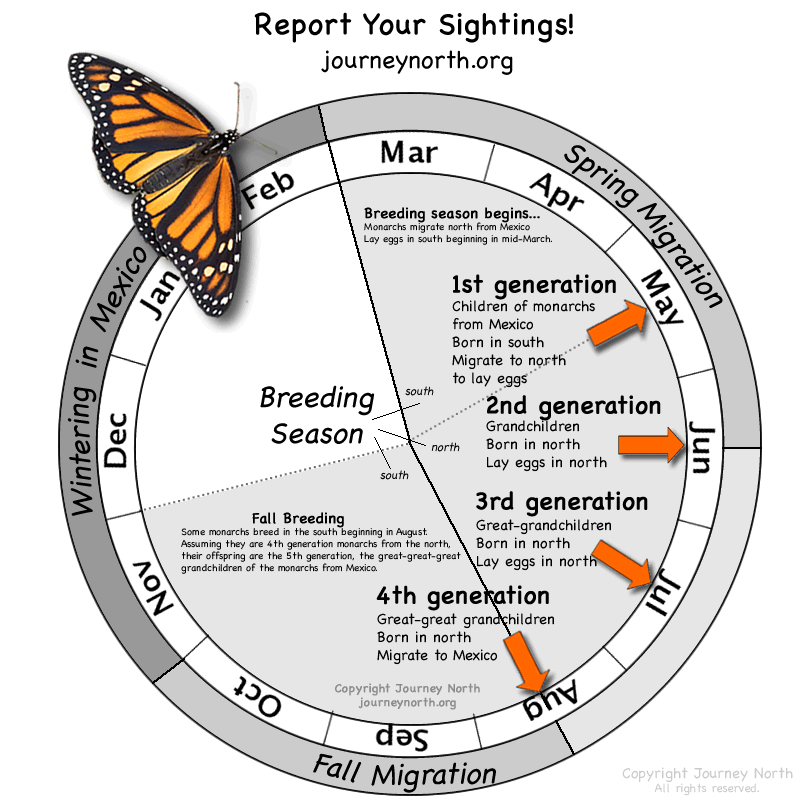| Please Report Your Sightings! |
- News: Peak Breeding Season
- Conservation: How You Can Help
- Maps: Report Your Sightings
 Breeding Season
Breeding SeasonCandy Sarikonda
| Tracking continues! Please report monarch eggs, larvae, and adults this summer, and tell us how many you see.
Four Generations The Migratory Generation Regional Differences in Abundance In contrast, many people in the US Northeast and Canadian Maritimes are still waiting to see their first monarch of the year. The region is farther from Mexico so monarchs arrive later and in lower numbers. A new generation is typically on the wing by mid-July, and monarchs suddenly become detectable then. In all regions, the population will grow with each generation and monarchs will become increasingly noticeable as the summer wears on. Fall Migration Begins Mid-August |
|
 Overview |
 |
 Resources Resources |
 |
 |
 |
| Summer Sightings | First Sightings |





